Symbols for the Fine Arts Bubble Letters With Symbols in Them Spelling Out Art
Every bit 1 of the first and fundamental forms of communication, writing and typography trace their roots even back to the Upper Paleolithic times when cave paintings used symbols equally a form of linguistic communication. Nonetheless, as the formal history says, writing has been developed past Sumerians around 3,500 B.C. As each civilization avant-garde, so their need for communication became more complex. From Egyptian hieroglyphics with symbols and ideograms to Aboriginal Greeks who used the alphabet created by Phoenicians, taken over by Romans afterwards. The Romans have also styled the Uppercase Alphabet, which nosotros even so use today.
Going over The Middle Ages which popularized illustrated manuscripts and calligraphy, focusing on the paw-written texts, nosotros come up to the nearly of import bespeak in the history of modern typography as we know it today – the invention of the moveable printing printing in the 15th century, by Johannes Gutenberg. Afterward this moment everything changed, books could be published and distributed on a large-scale, pregnant that education could become more spread, the news could be created and read, too every bit advertisements using the initial serif and sans serif typefaces. But how has writing evolved since and then, how did typography become more than just a decorative chemical element and turned into not just an important form of fine art, just as well a language itself in our contemporary society?[ane]
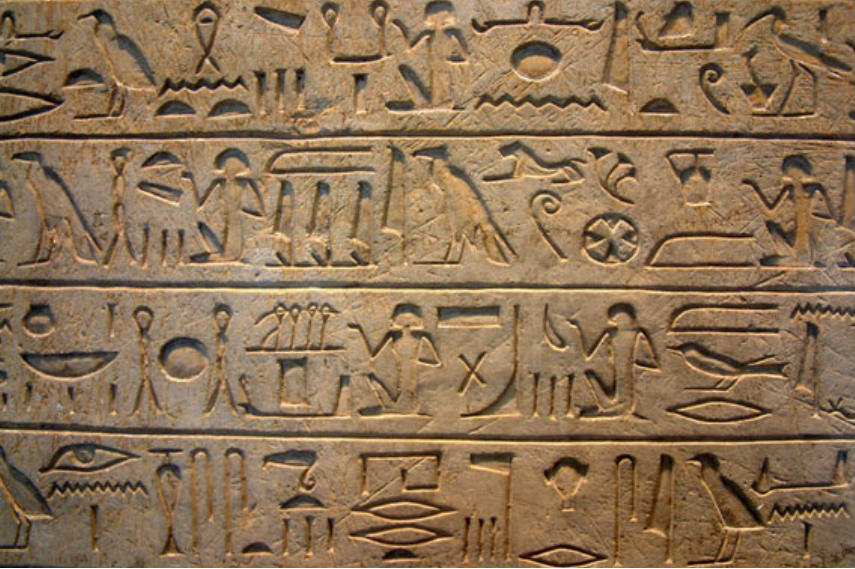
Early Modernist Typography – The Bauhaus Fonts
One of the last Bauhaus students, Herbert Bayer has definitely left a huge marking on not just typography, but as well other forms of visual arts and architecture. He used and adopted the principles of reductive Minimalism to develop his famous Sans-serif blazon titled Universal, and it was one of the keys to defining the entire Bauhaus aesthetic. The aesthetics of the Bauhaus has influenced many important artists, among them Jan Tschichold, the homo who created visual experiences on a subconscious level for all the book lovers, who could now run across art in books fifty-fifty while merely observing letters. Later seeing a Bauhaus exhibition in 1924, he adopted the limerick, construction and geometry of the Bauhaus, leaving behind his passion for black letters and scripts and adopting new rules. His nearly of import work was Die Neue Typographie – The New Typography, published in 1928, every bit a masterpiece of the modernistic typography and graphic design. This book standardized typographic practices with a prepare of rules. This reflected a move towards a more universal and modern communication mode.[2]

A Birth of Applied science Tools and Popular Fine art
With the rise of technological capabilities, the capitalist order prospered from additional means of creating new items and commercials, but also immune artists to refer to and play with these new creations. The most important motion which fabricated a revolution in typography during the early 1950s was when Varityper and Photon each introduced a reasonably priced, standalone typesetting system. This also meant that both the producers of goods and artists can have more access to the production of typography. Popular Art emphasized the kitschy elements of pop civilization and created fine art as a protest against the elitist culture and seriousness which surrounded it. Artists like Andy Warhol completely replicated both the forms of consumerist products, too as the fonts used for their commercials. Roy Lichtenstein, on the other hand, integrated a unproblematic, comic volume text font as a part of his famous large-scale paintings. Known equally one of the well-nigh of import pioneers of contemporary Typographic fine art influenced past Pop art, British artist Mike Edwards created and createsWord Paintings or Text Portraits in which each letter becomes rendered in a separate color. When the image is viewed from altitude, the messages merge together and create a photographic quality of the work.
Exist sure to check out works by Andy Warhol on our marketplace!
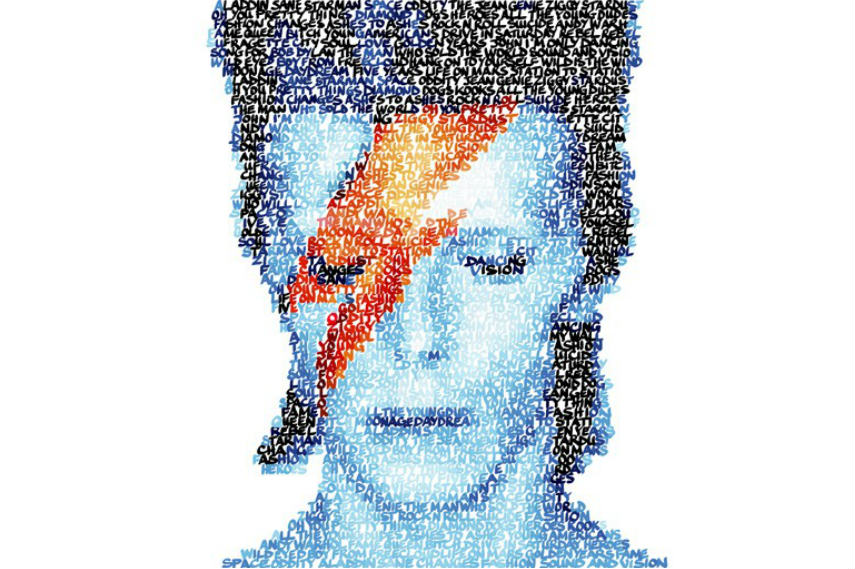
Typography as a Messenger of Peace in the 1960s Design
Every bit the 1960s were times of radical social changes, with the showtime of the peace movement and the psychedelic era, with it came new fonts and designs which were created to support the innovative ideas flourishing at those times. 1 of the almost of import designers of psychedelic posters was Wes Wilson, who heavily influenced typography by inventing a new font around 1966, which became synonymous with the era. It was the psychedelic font which made the letters become more dynamic and wait like they are melting away from the prints. Typography was used as a way of spreading ideas about the ongoing social changes, protests and ways of adopting a new lifestyle. Ane of the primal designers who too played an important function with his colour experiments was Victor Moscoso, who used the concept of vibrating colors on his typographic posters, created by taking colors from the contrary end of the color bicycle, with equal value and intensity.
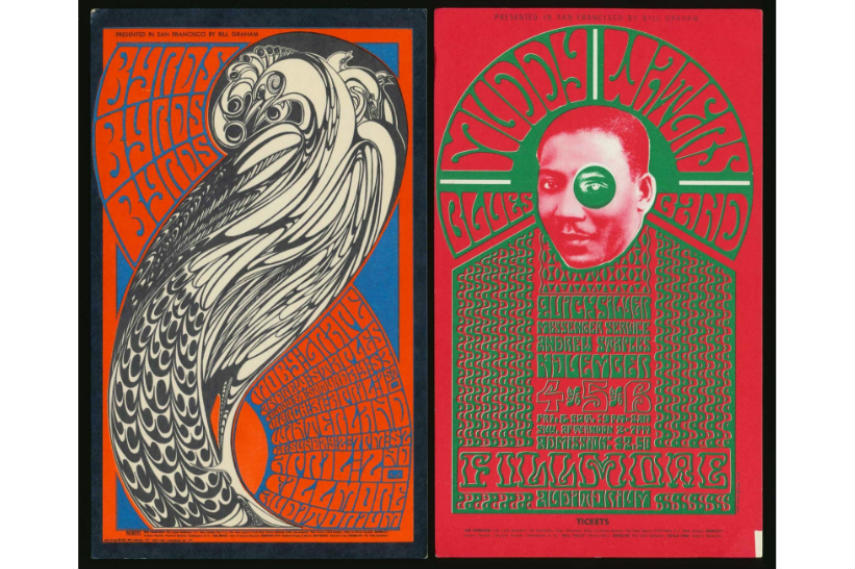
Between Tradition and Software Evolution in the 1970s and 80s
Apropos the engineering science of the 1970s, it included the invention of third-generation typesetters which used electronically stored font data. Through the early '80s, these machines were the most of import producers in the printing and publishing manufacture. The bubbly, futuristic, colorful messages on anthology and book covers during these times remain an important inspirational signal for artists even today, who endeavor to re-create the 18-carat retro fonts similar Baskerville OF, Bubble Mucilage, or Futura. Only even though many artists and designers of the time institute inspiration in the software evolution, others tried to renew traditional forms and to notice different means of applying them. In 1989, the true master of traditional typography and printmaking, and a multidisciplinary creative person,Alan Kitching, established The Typography Workshop, a studio that uses traditional techniques of letterpress printing simply too combines them with obsolete technologies and seeks new means to apply them. The consequence becomes magical and tin be seen through his innovative, colorful works which use forest and metal, just prove how even these traditional materials can exist inspiring.
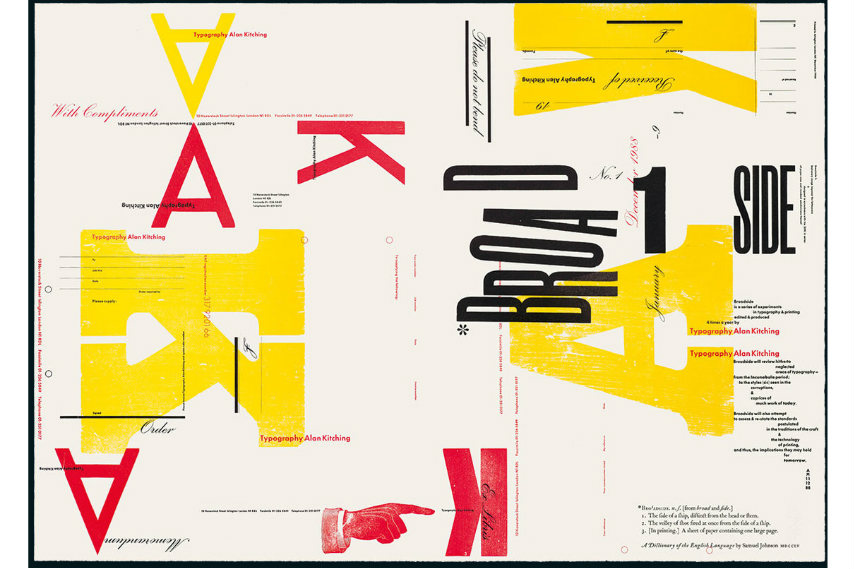
Contemporary Typography Design
Every bit always, contemporary artists have been redefining and transcending traditional practices and procedures of typewriting with the help of technology and multimedia design tools. The contemporary typography works, in the spirit of postmodernism, include and combine everything from Neo-Pop, gimmicky calligraphy, filmmaking, installation fine art, sculpture and street art. Some of the notable artists working with this style today is definitelyCraig Redman, who uses his iPhone, camera, laptop and Photoshop to create uncomplicated cynical messages presented in an optimistic, simple, form-reducing manner. Like many other artists working with typography, his piece of work doesn't stop with clients but he too enjoys creating messages of his ain. Starting as a graffiti artist who brutal in honey with calligraphy, Luca Barcellona combines ancient tradition with contemporary design and creates live calligraphy exhibitions. His works question the possibility of words condign a graphic interpretation of the text, and the most important piece in this series was his graphic reinterpretation of a story by Franz Kafka.
On the other hand, fifty-fifty traditional alphabets like Hangul become reinterpreted in gimmicky typography of Ahn Sang-Soo who transformed this ancient alphabet into an artform of its own. Rus Khasanov is another important gimmicky artist who uses items like laptop screens and soy sauce to create his typefaces. A prolific graphic creative person known for creating typographic installations which move the boundaries of this art even further, Oded Ezer makes projects which include implanting blazon into sperm's DNA, doing Typo-plastic surgeries to modify our trunk using blazon, and makes creatures out of Hebrew and Latin type.[4]
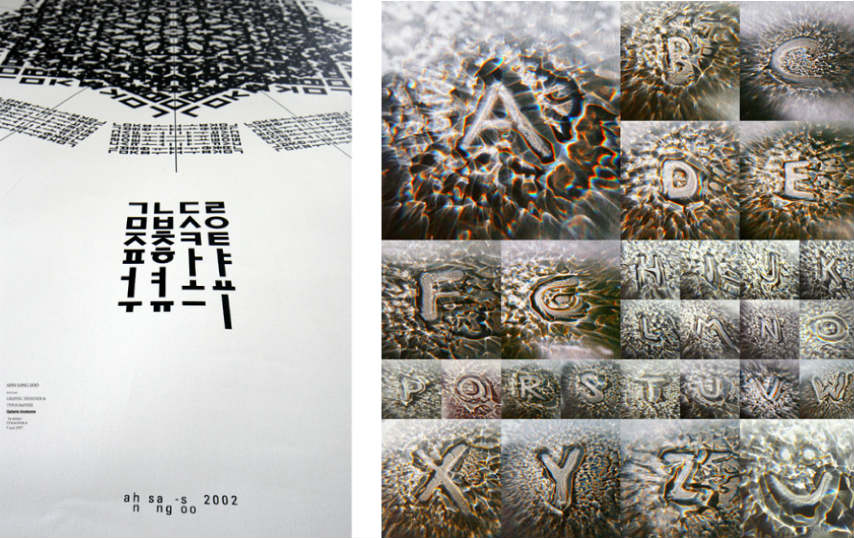
Contemporary Calligraphy and Typography in Street Art
Since its very beginnings, the fonts used in graffiti fabricated upwardly the essential quality of this art form, used to create an important mode distinction between unlike artists and groups. For an case, the famous pioneer of New York street art, Cope2 became earth-known for his recognizable bubbly font tags. More recently, the German street artist Bronco became internationally known for having a consistent typography which he combines with a precipitous sense of humour that criticizes and questions the pop-culture and politics, but also our everyday life experiences. Another socially engaged typography street creative person known for his sense of humour is the famous Max Rippon, or RIPO, who creates clever and highly stylized works which put words into visual landscapes and images into words, exploring the impact of textual advice through language, forms, and symbols.
The French street artist L'ATLAS comments on the displacement of people through his famous rigid forms and lines which take calligraphy every bit an inspiration for even creating large-scale installations in cities, which testify that borders between people merely also art forms merely exist within our minds. The British artistDean Zeus Colman createsfusions betweengraffiti, typography, sculpture and art in his 3D works, which explore the life of messages outside of their usual boundaries fix by street walls. Finally,Retna is an artist who went so far abroad in street art innovations within typography that he completely invented his own distinctive, synthetic script which he now uses every bit office of all artworks he produces. Typography definitely was and continues being a tool for transforming and reviving graffiti and street art styles and practices.
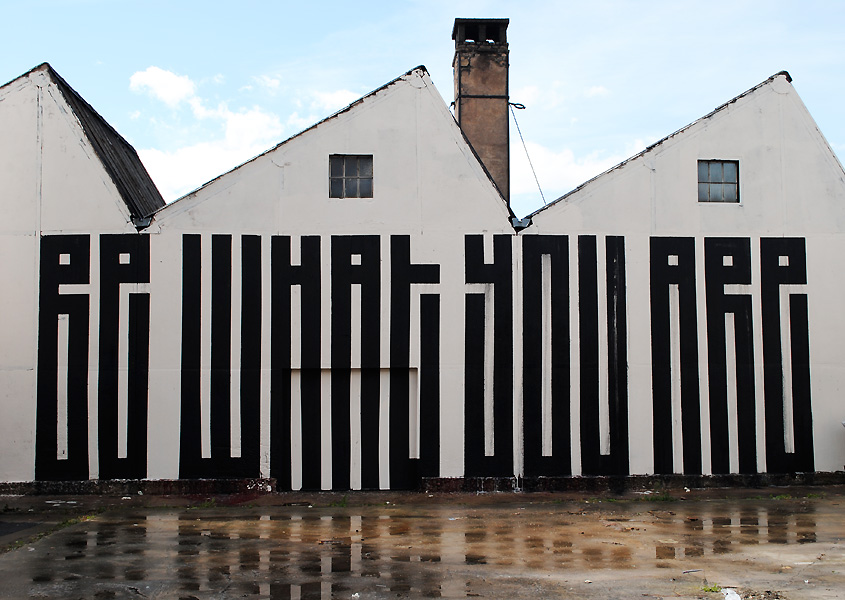
The Ability of Lettering
The evolution of typography seems to be bringing it back to its own roots; just like in the times of cave paintings, when information technology was all well-nigh having the symbols within the spaces y'all inhabit, it seems to exist going out to the streets once again, occupying walls and delivering messages. Gimmicky artists are at the same time developing new techniques with the aid of sophisticated engineering, but are also looking back into the by for inspiration, all the way to the ancient civilizations from which they have early on symbols and refill them with new meanings. Typography is inevitably not only a role of the visual imagery, but is a language for itself, an art form for itself, which shows perfectly the dichotomy between the pregnant and the expressive form of whatsoever language.

Editors' Tip: Blazon: A Visual History of Typefaces & Graphic Styles
This compact yet comprehensive book offers a thorough overview of typeface design from 1628 to the mid-20th century. Derived from a distinguished Dutch collection, a series of exquisitely designed catalogs trace the development of the printed letter via specimens in roman, italic, bold, semi-assuming, narrow, and wide fonts. Borders, ornaments, initial messages, and decorations are likewise included, forth with lithographic examples, letters by sign writers, inscription carvers, and calligraphers. The kickoff role of the book covers pre-20th century typeface, with texts past editor Cees de Jong and collector January Tholenaar. The second part covers the period from 1900 to the mid-20th century, and contains a historical outline by Alston W. Purvis.
References:
- David Diringer, The Book Before Printing: Aboriginal, Medieval and Oriental (Lettering, Calligraphy, Typography), Dover Publications; New York, 2011
- Cees W. De Jong, Blazon: A Visual History of Typefaces & Graphic Styles, TASCHEN, 2007
- Sarah Skrilloff, A Brief History of Typography, Ashworth Creative [March 28, 2017]
Featured prototype: Retna - Lesser Line is Red, Rus Khasanov - Typography for Fortune Detail, Rus Khasanov - Typography for Fortune Detail, Jan Tschichold - Blueprint Is History, Mike Edwards - Word Portrait of Edie Segwick, Oded Ezer - Contemporary Hebrew Typography, Max Rippon - Domestic Violence 2014. All images used for illustrative purposes only.
Source: https://www.widewalls.ch/magazine/typography-history-art
0 Response to "Symbols for the Fine Arts Bubble Letters With Symbols in Them Spelling Out Art"
Post a Comment